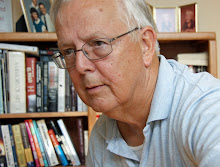 |
BLOODLANDS:
Europe between Hitler and Stalin
By Timothy Snyder
524 pp. Basic Books
Reviewed by Bob Sanchez
Originally published by the Internet Review of Books, 2011
There may have been no worse place on earth. Trapped between two hostile giants, about fourteen million innocents were murdered in the area that Yale History Professor Timothy Snyder labels the bloodlands: Poland, Ukraine, Belarus, the Baltic states, and part of western Russia. To the west lay Nazi Germany, with its policy of eastward expansion and depopulation. To the east lay the Soviet Union, with its policy of starving and killing masses of people, in particular its own peasants.
The bloodlands were not a specific, defined region, Snyder writes, but simply the lands where the two regimes did “their most murderous work...where most of Europe's Jews lived and where Hitler and Stalin's imperial plans overlapped.”
In page after page of Bloodlands, Snyder documents the mind-numbing atrocities committed by both sides. Sometimes the numbers of gassed, shot, or starved are estimates, and sometimes they are precise because the killers kept records. Either way, those numbers blur together throughout this painful, important book.
As early as 1933, Stalin had begun a killing binge that reached its nadir with his Great Terror of 1937-1938. The Bolsheviks learned from their experience with the famines of the early 1920s that “food was a weapon.” Between 1933 and 1945, more than half of the civilians who died in the region had been deliberately starved to death. Yet news of Hitler's rise to power in 1933 overshadowed the famine in the Ukraine.
Stalin treated the Ukrainian famine as sabotage by lazy peasants and disloyal local officials, though the Soviets shipped massive quantities Ukrainian grain to other parts of the USSR. Peasants were allowed next to nothing. Unauthorized collection of the smallest food scraps was considered theft and was punishable by death. Snyder writes:
A peasant slowly dying of hunger was, despite appearances, a saboteur working for the capitalist powers in their campaign to discredit the Soviet Union.
And he quotes a communist party official as saying during Stalin's Great Terror that people belonging to national minorities “should be forced to their knees and shot like mad dogs.”
Meanwhile, Hitler had a grand vision of using the area to his east as Germany's breadbasket, enslaving the “subhumans” he chose not to immediately exterminate. The “Final Solution” to the Jewish “problem” underwent several versions ultimately deemed impractical, such as deporting the Jews to Madagascar as slaves. Then in late 1941, Hitler settled on killing them all during the war. Hitler believed that “human beings were containers of calories that should be emptied,” Snyder writes.
Bloodlands is far from a casual read, but it will deepen one's perception of the depravity to which humans can sink. “This is a history of political mass murder,” Snyder writes. None of those deaths resulted from Soviet-Nazi combat but from their separate killing policies. In a broad sense Nazi policy was political, while Soviet policy was economic. The victims, I suspect, cared nothing about the distinction.
Were the concentration camps the worst of the Nazi atrocities? No, Snyder argues. “The image of the German concentration camps as the worst element of National Socialism is an illusion, a dark mirage over an unknown desert.” The camps seem the worst because there were survivors to tell about them, while vast numbers of victims never spent time in a camp but were simply shot or gassed in specialized death facilities. “In a matter of a given few days in the second half of 1941, the Germans shot more Jews in the east than they had inmates in all of their concentration camps.”
Both regimes had the ability to strip their victims of their humanity, he writes, yet “Each of the living bore a name. ...Each of the dead became a number.” By adding names and quoting from victims' letters, Snyder reminds us that each number still represented one real, unique human being. Fourteen million times one.
I had offered Bloodlands to a reviewer who, as it happened, had already read the book and hated it as a one-sided apologia that presents the Holocaust as less heinous than Stalin's crimes. So rather than write a scathing review, he declined the assignment. But Bloodlands left me with an altogether different impression: both Hitler and Stalin were bloodthirsty ogres. We can total up the victims and judge one dictator to be more evil than the other, but the exercise is pointless. Each was a scourge on humanity.










No comments:
Post a Comment